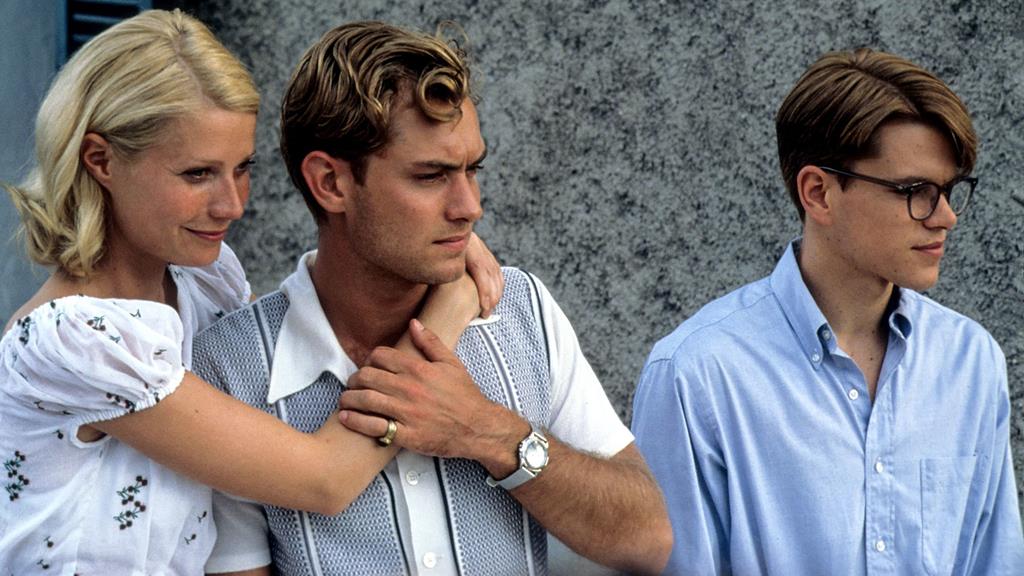A quiet, unassuming man meets another who is confident and commanding, becoming enamoured with him to detrimental results. No, it’s not Saltburn (2023), but Ripley (2024), a miniseries based on Patricia Highsmith’s 1955 novel, The Talented Mr. Ripley.
Having just watched The Talented Mr. Ripley (1999) on film a couple months ago (and read the novel not long after), it’s difficult not to compare the three. There are a number of similarities, including the inciting incident: a rich shipbuilder, Mr. Greenleaf, asks Tom Ripley to travel to Italy and covertly convince his son Dickie to come back home.
However, the differences soon start piling up. One that stuck out immediately was how Dickie engaged with Tom upon meeting him. In the movie, Dickie — charming and charismatic — warms to Tom almost immediately, and is thrilled to learn of his father’s plan. In the miniseries, Dickie is awkward and distant, taking a long time to warm to Tom. When he does, the warmth doesn’t stay long. While at first I was bothered by this — “Dickie is supposed to be charismatic!” I said. “This Dickie has the charisma of a wet blanket.” — I soon found that this awkwardness lent to the overall mood of the series.
Before we go any further, let’s get to know Tom Ripley. While Tom first appears timid and innocent, we soon find that this isn’t the case; at least not for long. Tom is cunning. Tom is ruthless. Tom is driven, determined to move up in the world. It’s these qualities — for better or for worse — that allow the story to unfold as it does.
What I love about Ripley is that every scene feels intentional; there’s not a single shot that feels extraneous. If anything, it appears that Steven Zaillian, director of the show, planned every moment down to the minute details, from how the camera framed the scene, to which paintings appeared, to how someone’s expression shifted from one instant to the next. I’m generally the kind of person who needs to knit or doodle while watching anything, but this intentionality made it so that I found myself glued to the screen, hands motionless in my lap.

Adding to this sense of intentionality and improving the experience further is that the cinematography throughout the series is breathtaking. Despite Ripley being in black and white for its entirety, each scene is vibrant, dazzling; Zaillian took care to make up for the lack of colour through intentional framing of stunning locations: the steep stone steps of Atrani; the opulent rooms of an apartment in Venice.
And then everything is so ominous, as though at any moment something terrible could crash into existence. The tension that builds within the scenes — in fact, in almost every scene throughout the eight episode series — leaves you feeling like you need to check around every corner you come to. Even the smallest moments such as Tom talking to Dickie in his art studio or a conversation with Marge in Dickie’s study, contribute to this overall sinister mood.
Yet Ripley is riveting, too; the sinister undertones have the dual ability of making you feel the need to continue watching, even as you’re gripping the edge of the couch, wishing you could close your eyes and look away — for the tension to just break, already.
Spoilers below — read with caution
The one complaint I have is that the last episode feels a little disjointed. While Carravagio and his art is mentioned earlier in the series through a few passing comments by Dickie, the hard focus on the similarities between Ripley and Carravagio feel forced. While I do see some connections, it would have been beneficial to having more parallels throughout to give this connection a more cohesive feeling.
Full disclosure: I was rooting for Tom the entire way through. Yes, this probably makes me some sort of unhinged, and yes, I realize Tom has all sorts of moral failings. But everything about his character, all the way down to minute facial expressions and body language — how he evolves from hesitant to self-assured — are so well-acted, that it’s hard not to want him to get what he’s after. And he does get what he’s after; that’s the entire point. No matter what Tom wants — be it a piece of artwork or someone else’s identity — he’ll get it. It can’t turn out any different way.


